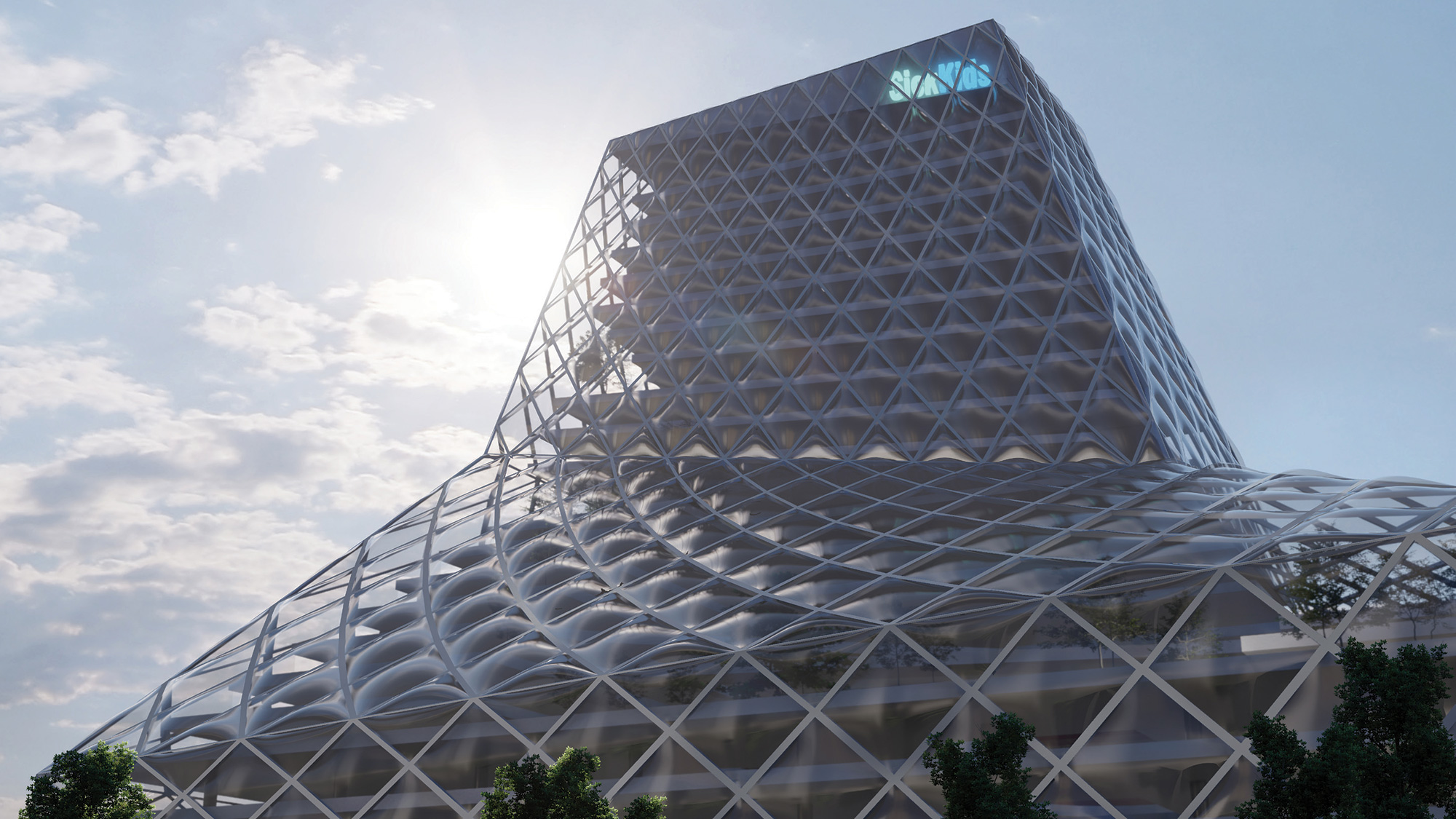
Yi Zhang, "Project Horizon - SickKids Expansion"
SickKids, a University of Toronto–affiliated children's hospital, is in the midst of "Project Horizon," a major capital campaign that will the result in the construction of two new hospital towers, as well as substantial renovations to the rest of the hospital's campus.
For this option studio, titled "A New Patient Centre for SickKids Hospital," students were asked to imagine that they were the design architects for Project Horizon. Throughout the semester, they worked to develop original design concepts that would meet the needs of hospital staff and young patients, all according to specifications taken from the hospital's actual bid documents.
Students were guided through this process not only by their studio instructor, professor emeritus George Baird, but also by Bruce Kuwabara, a partner at KPMB, and Michael Moxam, vice president at Stantec. KPMB and Stantec are two of the architecture firms engaged in the design process for the real-world Project Horizon.
Yi's project tackled the second phase of Project Horizon: the Peter Gilgan Family Patient Care Tower, a new hospital wing for acute patient care. The real-world tower will be built on the western edge of the hospital's campus, facing University Avenue. It's scheduled for completion in 2029.
Yi knew he didn't want to design an ordinary hospital wing. Instead, he decided to apply "biophilic design," a concept popularized in the 1980s and 1990s by American biologist E.O. Wilson.
Wilson's biophilia hypothesis holds that humans have evolved to crave connection with nature and natural forms. As Yi researched biophilia, he found a handful of scientific studies that established links between access to nature and positive health outcomes in hospital settings.
In order to provide SickKids patients and staff with year-round access to nature, Yi came up with an unconventional design solution. His tower would have an indoor park. The park and tower would be enclosed in a massive, transparent building envelope that would be specially designed for all-weather thermal efficiency.
For inspiration, Yi turned to Sidewalk Labs, a Google-affiliated company that was, at the time, engaged in an effort to redevelop part of Toronto's waterfront into a futuristic prototype neighbourhood, where new urban technologies could be tested. (Sidewalk has since terminated its land development activity in Toronto.)
Sidewalk, in collaboration with Toronto architecture firm Partisans, has been researching a type of plastic called ETFE, for use in a "building raincoat" — a transparent, lightweight, weatherproof barrier that could be attached to a building's facade to shield it from cold and precipitation. ETFE had just the right characteristics for Yi's design. He decided to use the material in his envelope.
ETFE alone would have admitted too much light into the hospital interior, so Yi decided to apply a subtle, opaque pattern to the material. This process, known as "fritting," reflects some of the sunlight that would otherwise enter the ETFE envelope. This prevents the space inside the envelope from becoming unbearably warm during summer months.
Yi designed a multilayer fritting system that could be adjusted to admit slightly more sunlight during winter. This would allow the hospital to use the ETFE envelope as a source of passive heating, like a greenhouse — but only when needed.
Yi's envelope is large enough to contain the entire Patient Care Tower. The building's windows face the indoor park, allowing patients and hospital staff views of the serene all-weather scenery. The tower also has a number of cut-outs and terraces for smaller green spaces, which Yi envisioned as being useful for patients whose medical conditions don't permit them to access the park.
Instructor: George Baird

